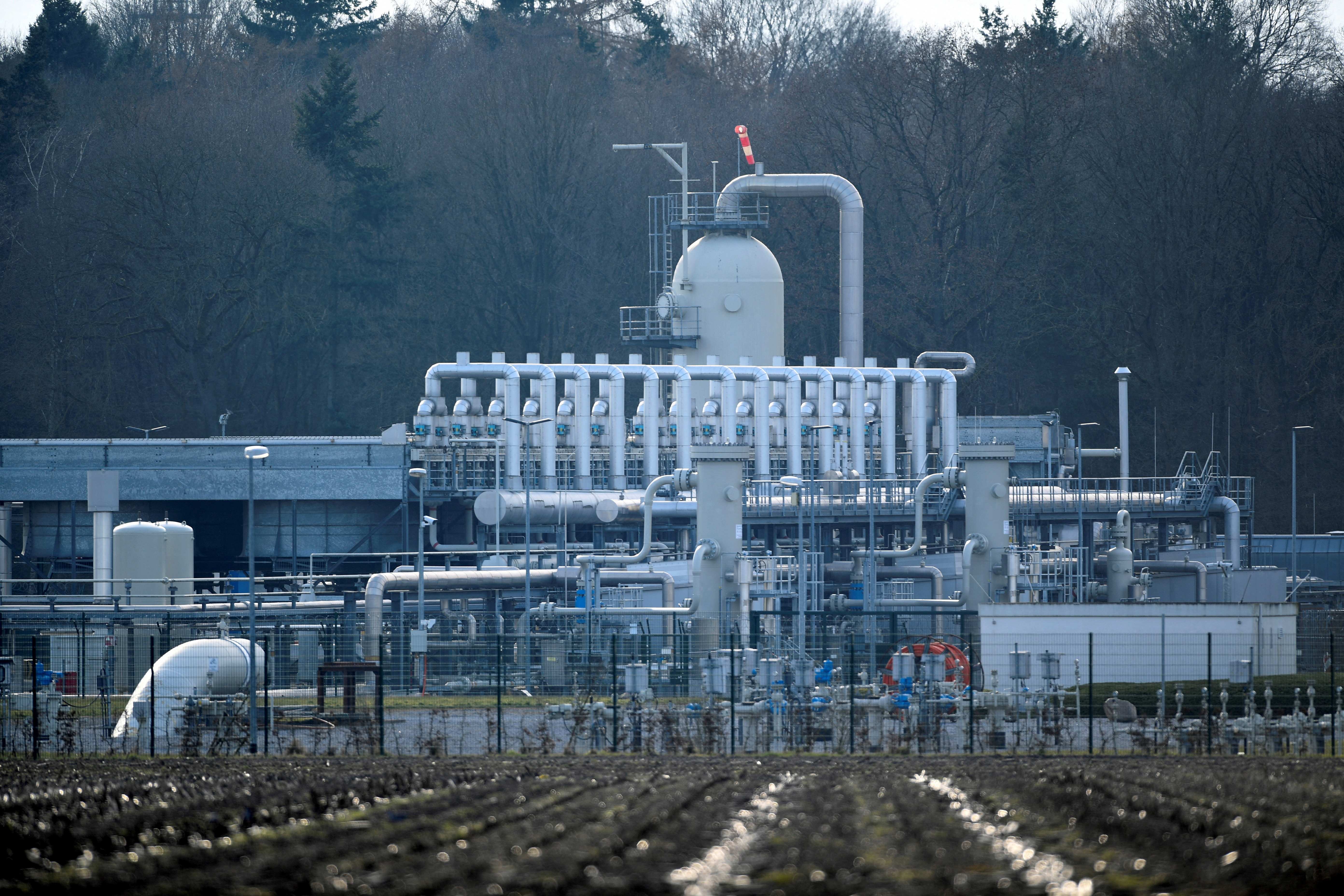Summary
- LNG supply needs to keep up at strong rates
- Households required to use less energy
- Colder-than-normal winter, unforeseen outages are risks
Europe needs to make payments to import liquefied natural gas, pray for a favorable winter and reduce energy demand as any sabotage of infrastructure or even more cuts to Russian supply would make power rationing or blackouts all but inevitable.
Even if Europe manages to keep warm and prevent power outages this winter, it will have a much greater challenge to replenish depleted storage in 2023 than it did to reach a European Union goal to stock up to 80% of capacity by November this year.

It has surpassed that goal and storage, currently near 90%, is a buffer, but the halt of gas via the Nord Stream network from Russia to Germany, leaves a gap despite jacked up supplies from elsewhere.
Russia gradually cut gas flows through Nord Stream and via other routes after Western sanctions in response to the country’s invasion of Ukraine that started in February. Gas via Nord Stream was halted completely last month.
Analysts placed the gas shortfall at about 15% of average European demand in winter, indicating the continent has to reduce consumption to pull through the peak demand heating season.
“The situation will remain very fragile,” Cuneyt Kazokoglu, director of energy economics at FGE, said.
He added:
“Household gas consumption in Germany jumped at the end of September to the highest level since March because of a cold spell, and demand was about 14% above the 2018-2022 four-year average. This is posing a threat.”
Germany, Europe’s largest economy and one of the continent’s largest importers of Russian gas, is most vulnerable to supply disruption and has been particularly active in drawing up plans to protect its industries and consumers.
Any hope of the Nord Stream network resuming shipments to Germany was shattered in September by suspected sabotage.
European countries have said they are working on enhancing the security of vital infrastructure after explosions destroyed Nord Stream 1 and Nord Stream 2, which has never operated, but had been loaded with gas in readiness.
Russian outages could yet deepen if Moscow sees through its threat of sanctioning Ukrainian energy firm Naftogaz, sealing one of the last functioning Russian gas routes to Europe.
Global Competition
Europe has been boosting its liquefied natural gas (LNG) imports and developing the necessary infrastructure, but it has to compete on the global market where competition could become intense if the weather phenomenon known as La Nina intensifies and increases Asian demand.
That would push prices higher. As Europe has succeeded in increasing stocks, prices have dropped from peaks reached around the time Russia sent its troop into Ukraine, but the price of wholesale Dutch gas, the European benchmark, is still about 80% higher compared to this time last year.
“Additional LNG and demand destruction have helped so far this year,” Wayne Bryan, head of European gas research at Refinitiv, said but added: “Europe needs more of the same medicine”.
Even then, it is unlikely to compensate for the unavailable Russian gas. Refinitiv estimates northwest Europe, including Germany, could import 18 billion cubic metres (bcm) more LNG this winter, taking imports to 52 bcm in 2022, 5.5% higher compared to last year.
Pipeline gas supplies have also escalated from Azerbaijan, Norway, and North Africa, but continue to be far below those the former leading gas exporter used to supply.
Jointly, the Nord Stream pipelines have a combined capacity of 110 bcm per year, and would make up for over 30% of total European gas demand if they operated at full capacity, Bank of America said.
Currently, Russia is supplying 86 million cubic metres (mcm) a day into northwest Europe via Ukraine and Poland, compared to an average of 360 mcm/day in 2021, a 76% drop, Bernstein analysts said.
Analysts’ estimates differ. If supply continues at current levels, Europe experiences a 155 mcm/day shortfall, Bernstein figures show, formed on an average daily demand in northwest Europe for September to March from 2017-2021 of 930 mcm.
EU nations have decided to shrink demand by up to 15% or 50 bcm this winter.
If they accomplished that, storage levels should end the winter at about 55 bcm. Replenishing them in time for the next winter will be made difficult by missing Russian supplies that Europe was still taking earlier in 2022.
A risk is that as energy supplies fall, energy demand will not decrease enough. European industrial gas demand has reduced as soaring gas prices have caused factories in energy-intensive sectors such as steel, aluminium, and ammonia, have shut production.
Buy Crypto NowBut Germany’s Federal Network Agency, which would oversee gas rationing in the event of a supply emergency, said household consumption is too high to be supportable. Another issue is that aging nuclear plants and problems cooling reactors during a summer drought have minimized French atomic energy production with knock-on effects.

Refinitiv estimates that ensuing gas-for-power demand among utilities could be 30% higher in 2022 than last year. Britain, which can import power from Europe, has also warned of power outages this winter owing to the shortages in Europe.
A more serene energy supply situation could be several winters away. Francisco Blanch, analyst at Bank of America, estimated the normalization of gas prices in Europe could carry on for five-to-ten years. He stated:
“Europe will have to keep paying up for gas and praying for warmer weather.”








